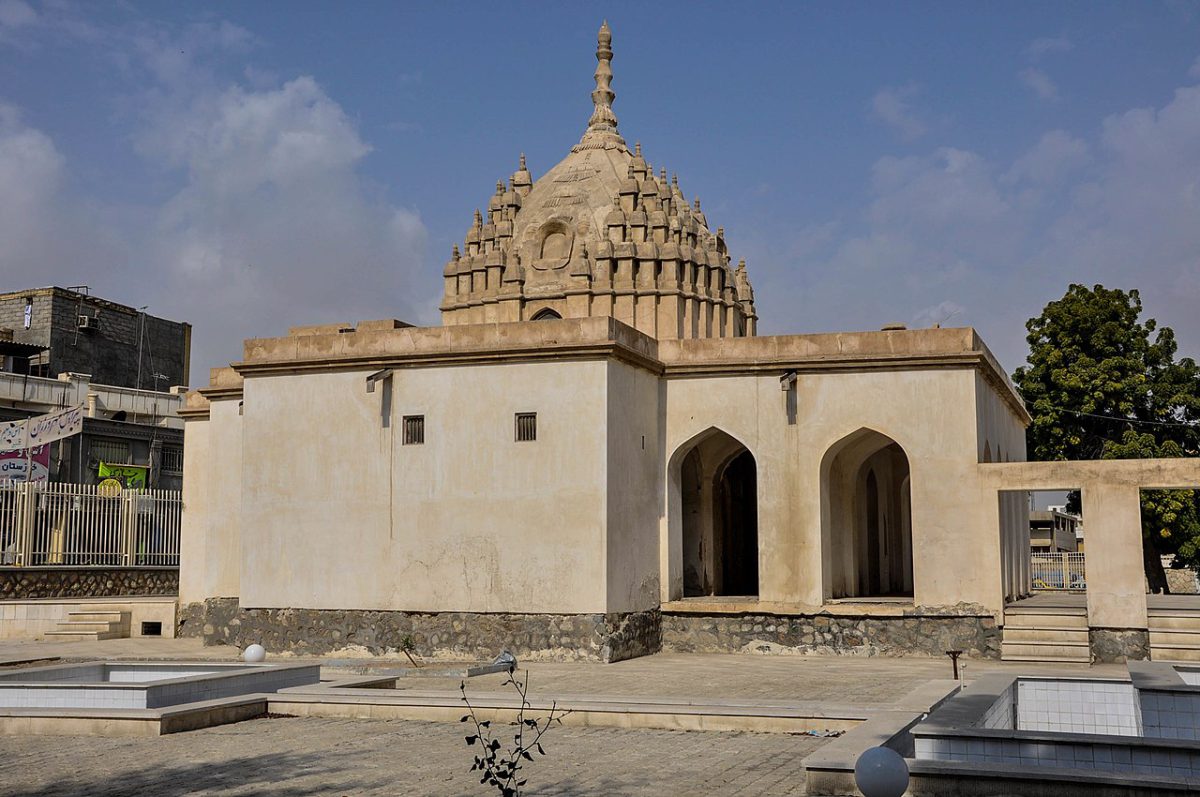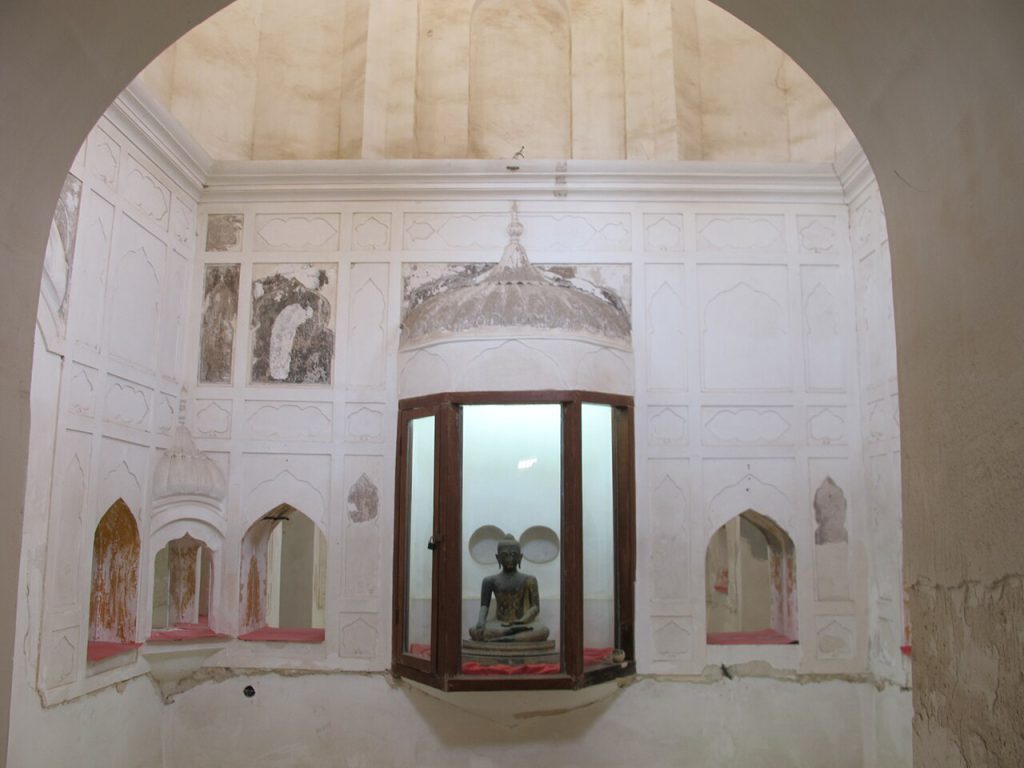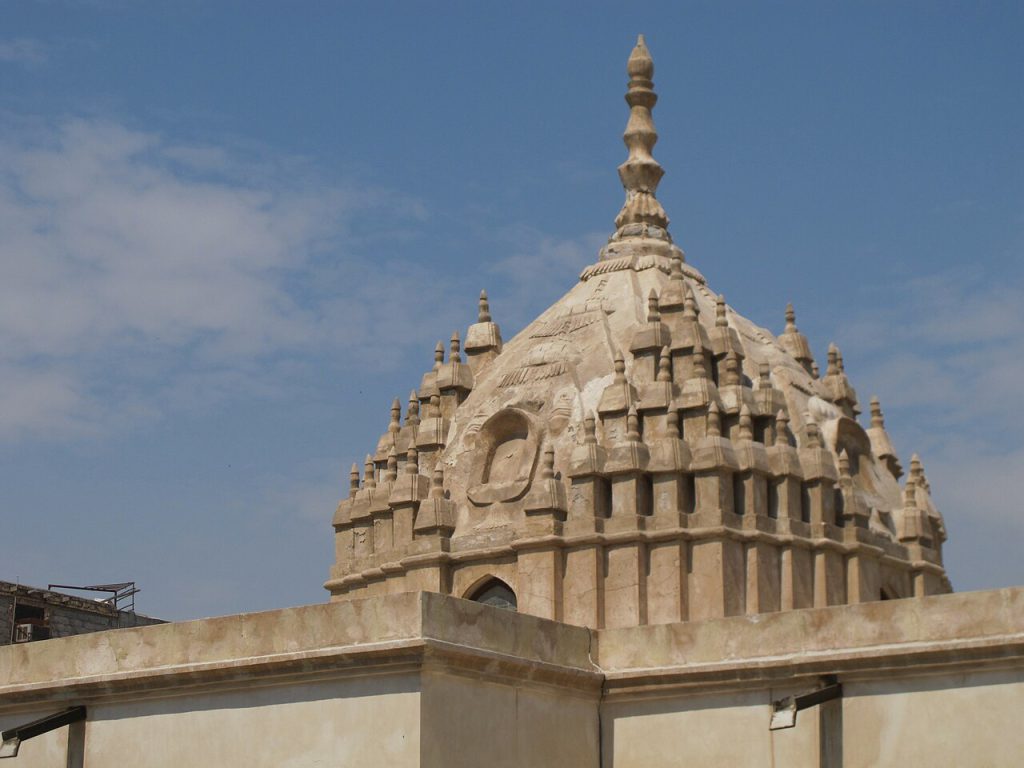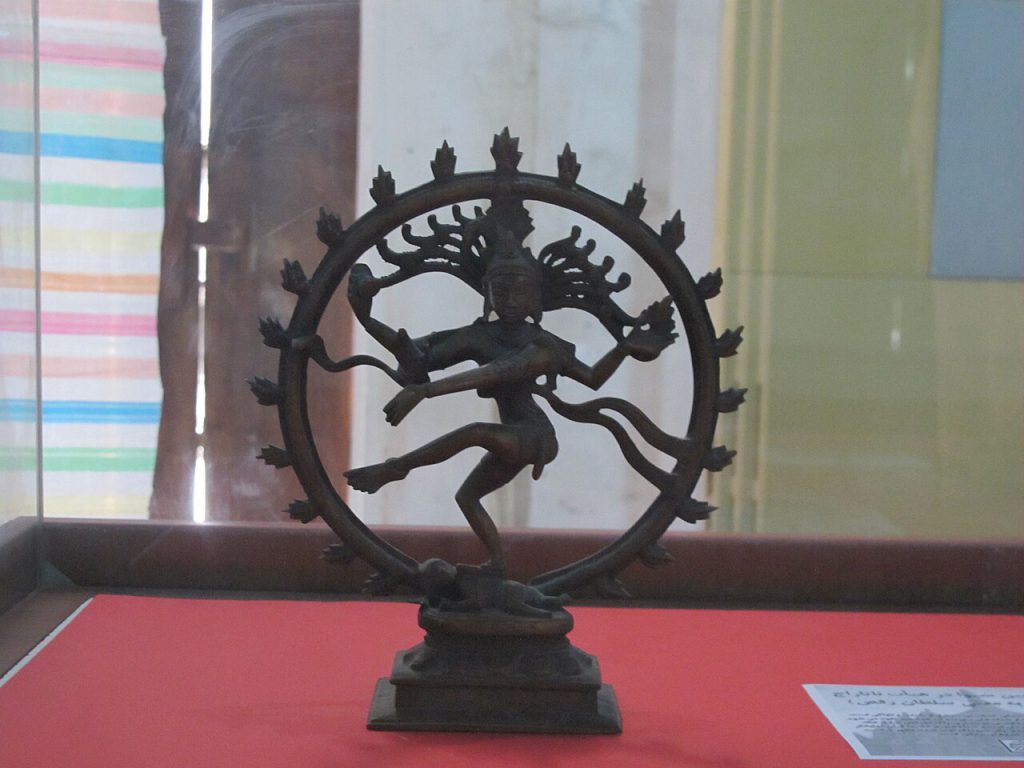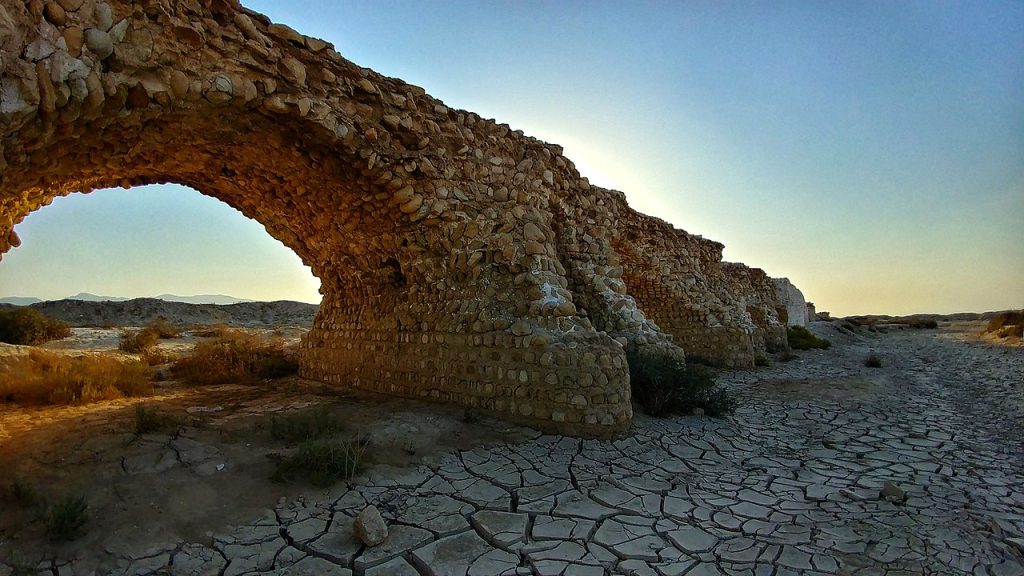Table of Contents
Located on Imam Khomeini Street, directly across from the bustling marketplace, the Hindus Temple stands as a testament to the rich history of Bandar Abbas. Constructed in 1310 AH (1892 AD), this remarkable monument was brought to life during the reign of Mohammad Hassan Khan Sa’d-ol-Malek. The temple’s creation was made possible by the generous contributions of Indian merchants, reflecting the strong cultural and economic ties between the local community and the Indian traders of that era.
This temple, with its unique architectural features and historical significance, has become a prominent symbol of the city’s diverse heritage. It’s not just a place of worship but also a reminder of the era when Bandar Abbas was a vibrant hub of trade and cultural exchange. The Hindu Temple continues to be a point of interest for both locals and visitors, offering a fascinating glimpse into the city’s past.
Hindus Temple History
The Hindu Temple in Bandar Abbas owes its existence to the combined efforts of Indian merchants who gathered funds from the Hindu community. This architectural gem was constructed in 1310 AH (1892 AD) under the rule of Mohammad Hassan Khan Sa’d-ol-Malek, the governor of Bandar Abbas at the time. The temple’s creation not only highlights the deep cultural connections between the Indian and Persian communities but also serves as a testament to the strong influence of Indian merchants in the region.
This collaboration between the local government and the Indian community led to the establishment of a significant monument that has stood the test of time. The temple’s construction during this period reflects the prosperity and multicultural nature of Bandar Abbas, where trade and cultural exchange flourished. Today, the Hindu Temple remains a symbol of the shared history and enduring legacy of these two interconnected cultures.
Hindus Temple Architecture
The Hindu Temple in Bandar Abbas stands out with its striking Indian architectural style, a rarity in Iran. The use of materials and design elements not commonly found in Iranian structures sets this temple apart. The most eye-catching feature is the temple’s dome, adorned with 72 turrets, drawing clear inspiration from traditional Indian architecture. This dome, often considered one of the most beautiful in Iran, is a testament to the skilled craftsmanship that went into the temple’s construction.
Inside the temple, the design continues to impress with its quadrangular main room, framed with intricate details that add to its grandeur. Four corridors encircle the temple, providing a space where worshippers once gathered to pray. The interior, with its beautiful and meticulously crafted elements, creates a serene and awe-inspiring atmosphere, making it a significant cultural and architectural landmark in Bandar Abbas.
Hindus Temple Cultural Significance
The Indian temple in Bandar Abbas is more than just a place of worship; it embodies the vibrant cultural mosaic of the city and, by extension, Iran. As a symbol of religious tolerance, the temple reflects the harmonious coexistence of various communities, showcasing how diverse traditions can thrive side by side. This sacred space invites individuals from different backgrounds to come together, fostering an atmosphere of mutual respect and understanding that resonates throughout the region.
Moreover, the temple highlights Bandar Abbas’s historical role as a melting pot where various cultures intersected. Its architecture and rituals reveal influences from both Indian and Persian traditions, creating a unique blend that enriches the local heritage. This cultural significance extends beyond its physical presence, serving as a reminder of the city’s enduring commitment to inclusivity and the shared values that bind its people together.
How to Get to Hindus Temple
To reach the Indians’ Temple, also known as Bot-e Gouran, start your journey at the bustling Bargh Junction on Imam Khomeini Boulevard. From Bargh Junction, you can either walk or take a short taxi ride through the vibrant streets of Bandar Abbas, where local shops and markets offer a glimpse into daily life. The temple is conveniently located across from the bazaar, making it easy to combine your visit with a stroll through the local commerce.
Working Hours of Hindus Temple
The working hours of a Hindu temple typically span from 8:00 AM to 6:00 PM, creating a vibrant atmosphere for devotees and visitors alike. This schedule allows ample time for worship, rituals, and community activities, fostering a sense of connection among attendees. The temple’s doors welcome seekers of spirituality, providing a serene environment to reflect and engage with their faith throughout the day.
However, it’s important to note that these hours may vary on Fridays, which are often exceptions. This flexibility allows the temple to accommodate special events or festivals, ensuring that everyone can partake in the unique experiences that the temple offers. Whether it’s a quiet morning of prayer or an evening of festivities, the temple serves as a cornerstone for cultural and spiritual engagement within the community.
Recommended Sightseeing Time of Hindus Temple
When planning a visit to a Hindu temple, dedicating around 30 minutes to an hour can be ideal for a fulfilling experience. This timeframe allows you to absorb the tranquil ambiance, admire the intricate architecture, and participate in rituals if you wish. Strolling through the sacred spaces, you can take in the vibrant colors and detailed carvings that reflect the rich cultural heritage of the temple.
Other Attractions Near Hindus Temple
Lateidan Bridge
Lateidan Bridge is an impressive structure that spans the Kal (Kool) River near Bandar Abbas. This historic bridge was constructed during the Safavid era, making it several hundred years old. While a major portion of the bridge has been destroyed over time, it remains an important monument that showcases the engineering prowess of its builders.
Galeh-Dari Bath
The Galeh-Dari Bath, also known as Hammam-e Galeh-Dari, is a small historical bathhouse in Bandar Abbas that dates back to the Qajar era. Built in the 19th century by order of a famous local merchant, this modest structure features a rectangular shape with small and large domes. Although it may not take long to visit, the bath offers a glimpse into the architecture and culture of the region during the Qajar period.
BandarAbbas Bird Garden
Nestled within a compact 6.2-meter area, the BandarAbbas Bird Garden is a vibrant sanctuary that showcases a delightful variety of avian species. Visitors can marvel at an impressive collection of birds, including majestic eagles, colorful parrots, and elegant peacocks. The garden’s layout allows for an immersive experience, where the sounds of chirping and the sight of fluttering wings create a lively atmosphere. Whether you’re an avid birdwatcher or simply looking for a serene escape, this garden offers a unique opportunity to connect with nature and observe these fascinating creatures up close.
FAQs about Hindus Temple
Q1: Are there any Hindu temples in Iran?
A1: Hindus are a small group in Iran, but there are two Hindu temples there that were built by Indian traders. One of these is the Vishnu Temple in Bandar Abbas, a city in Hormozgan province.
Q2: Can Hindus visit Iran?
A2: Indians with regular passports can visit Iran without a visa if they are going for tourism. They also need to enter the country by air.
Q3: Are there Persian Hindus?
A3: There are no native Hindus in Iran. The only Hindus in the country are those who come as diplomats or for business.
Q4: Can Indians live in Iran?
A4: In the 1960s and early 1970s, around 10,000 Indian doctors, engineers, and teachers moved to Iran due to the open policies of the Shah. However, most left after the Iranian revolution. Today, more than 4,000 non-resident Indians live in Iran.
Q5: Are there Hindu temples in the Middle East?
A5: Members of the Indian community, including managers, doctors, technicians, engineers, IT experts, and business leaders, have made a significant impact on the social and economic life of the Gulf nations. Hindu temples have been established in Bahrain, the United Arab Emirates, Yemen, and Oman.
Last Words: Discover the Best of Hindus Temple with a Customized Tour
The Hindu Temple, located on Imam Khomeini Street across from a busy market, is a key part of Bandar Abbas’s history. Built in 1892 during Mohammad Hassan Khan Sa’d-ol-Malek’s rule, it was funded by Indian merchants, showing the strong connections between the local community and Indian traders. With its unique design and historical importance, the temple symbolizes the city’s diverse culture. It serves not only as a place of worship but also as a reminder of Bandar Abbas’s past as a lively trade center. Today, it attracts both locals and visitors interested in the city’s history.
If you’re looking to travel to Iran and fully experience the beauty of the Hindu Temple and other cultural gems, consider a Customized tour. To make your journey unforgettable, look no further than To Iran Tour. We specialize in Iran tours and travel packages designed to fit your unique preferences. Our team of experts is dedicated to crafting an itinerary that highlights the best of Iran, including its rich history, vibrant culture, and stunning landscapes.
At To Iran Tour, we are here to help you have a great experience in Iran. Let us guide you through a journey that you’ll cherish for a lifetime with our exceptional Iran Tours. Your adventure starts here!

